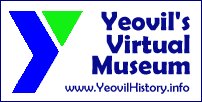newnam memorial hall
newnam memorial hall
South Street
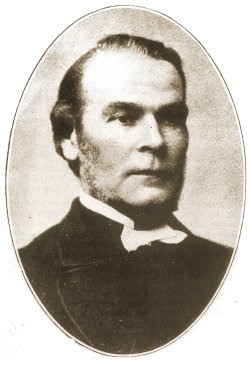 In 1912
the Newnam
Memorial Hall
and Schools were
built alongside
the
Baptist Chapel
in
South Street.
It was named in
memory of Rev
Samuel Newnam,
minister of the
adjacent Baptist
chapel from 1883
until 1896.
In 1912
the Newnam
Memorial Hall
and Schools were
built alongside
the
Baptist Chapel
in
South Street.
It was named in
memory of Rev
Samuel Newnam,
minister of the
adjacent Baptist
chapel from 1883
until 1896.
Samuel Newnam, photographed at left, resigned as pastor in 1889 after serving over 15 years at Yeovil, and over 50 years altogether in the Ministry. He retired to Fivehead and died there on 26 May 1907.
In 1910 it was proposed to build new schoolrooms at an estimated cost of £2,500 plus £550 for purchase of necessary land. In 1911 a tender reduced to £1,600 was submitted by Messrs Bird & Pippard (who had recently completed the building of the new Western Gazette offices) and accepted. To this sum was added some £200 for the fee of the architects, Newby, Vincent & Findlay Smith of Southampton, and other sundry extras. The final cost, including land, amounted to £3,500. The new building was opened on 21 October 1912 under the auspices of the Mayor, J H Boll. Mr Ebenezer Pittard presented a silver key to Mrs Beilby, the daughter of Samuel Newman, to unlock the door and declare the building open. Prayers were offered by Rev AJ Davies, the President of the Western Baptist Association, and at 5:30pm at public tea was served which was followed by a tour of the new premises.
|
From the
diary of
Louisa
Harris .... |
The main school comprised a Kindergarten, Primary, Junior, Intermediate Boys and Intermediate Girls schools. Senior Boys and Senior Girls schools together with Men's Own and Women's Bible Class was to form a proposed Institute. The building also included a Home Department, a Senior and Junior Christian Endeavour Society and was home to the Band of Hope, the 1st Yeovil Company Boys Brigade, 1st Yeovil Company Girls Life Brigade, a Clothing Club and a library.
The enormously high casualty rate suffered by the army on the Western Front placed an enormous strain on the country's civilian and military hospitals. Consequently, across the country public halls, schools, large houses and other buildings were temporarily adapted to treat the thousands of wounded men returning from the Front.
In January 1915 a Red Cross military hospital opened in the Newnam Memorial Hall, the hall being lent free of charge by the South Street Baptist School trustees. The auxiliary military hospital comprised four wards, a well-equipped operating theatre (see Gallery), a recreation and dining room, the Commandant's room, stores, bathroom, kitchen and 'necessary offices'. Three motor ambulances were used for the transport of casualties, one bought with private donations, another loaned by house furnishers Messrs White Bros, and a third the gift of members of the Ivel Club and Mr W H Hine. These ambulances met an ambulance train at the station every night at 7pm.
A list was posted in the window of the Middle Street Post Office every evening, naming the dead, missing and wounded. Women used to take it in turns to read the list out loud to the assembled wives, mothers and sweethearts.
Many of the nurses were made up of women who had volunteered to ‘do their bit’ and were part of the Voluntary Aid Detachment (VAD), who had been trained by the Red Cross and St John Ambulance. These women were usually from the middle and upper class families of the local area who could afford to give the time and buy their uniforms and who fitted into the age ranges of 23 to 38 years old. Part-time VAD’s were unpaid although matrons, sisters in charge and ward sisters were paid a guinea a year.
A small trained staff of Sisters and Red Cross Nurses was supervised by the full-time Commandant Miss L P Stobart, and assisted by volunteers from the Somerset/80 (Women) and Somerset/19 (Men) Voluntary Aid Detachments, the latter undertaking night duties as well transporting the casualties. Local surgeons and physicians also readily gave their services. The wounded were brought straight from the hospital ships to the designated place of detrainment, Sherborne railway station, and transported to Yeovil in motor ambulances driven and manned by members of the Men’s VAD.
The first patients were 103 men from the 1,200 Territorials and Army Service Corps billeted in the town and of these there was only one death, Private Ernest Baker. In July 1915 the hospital became recognised as a primary station and immediately began to receive casualties from various Fronts. At this time the accommodation was increased to 62 beds. In total 1,200 men were treated at the hospital and only four deaths occurred.
A letter from the Prime Minister was sent to the church in November 1917 thanking them for the use of the schoolrooms as a Red Cross military hospital. The hospital closed in December 1918, following the end of the war.
A plaque was affixed to the front wall of the building as photographed below. The plaque reads "This stone is erected by the Yeovil Town Council in grateful recognition of the splendid services rendered on behalf of the town by the British Red Cross Society, in providing a hospital for the care of 1,200 wounded sailors and soldiers and to the Baptist church for the generous loan of these premises for the purpose during the Great War 1915-1919. Alderman WRE Mitchelmore, Mayor of Yeovil."
Gallery
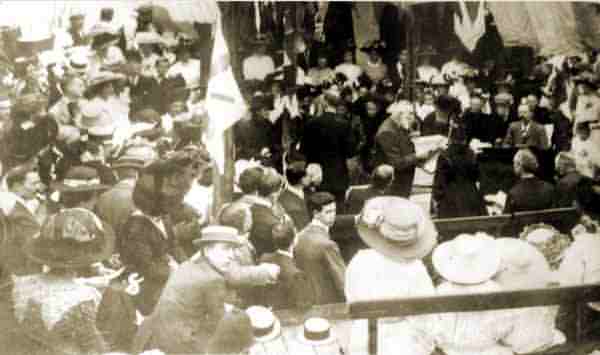
Miss Rosa Chapman lays the foundation stone of the Newnam Hall on 20 July 1911.
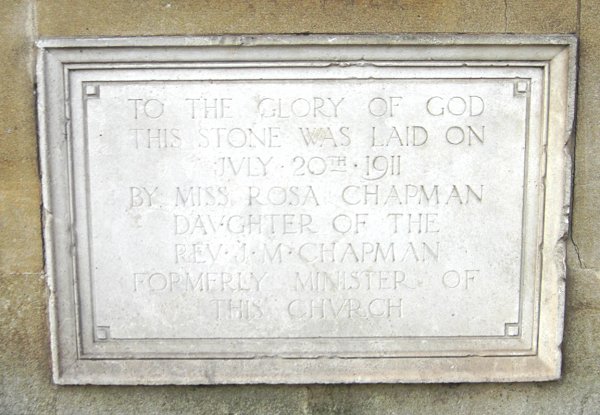
The 1911 foundation stone of Newnham Hall.
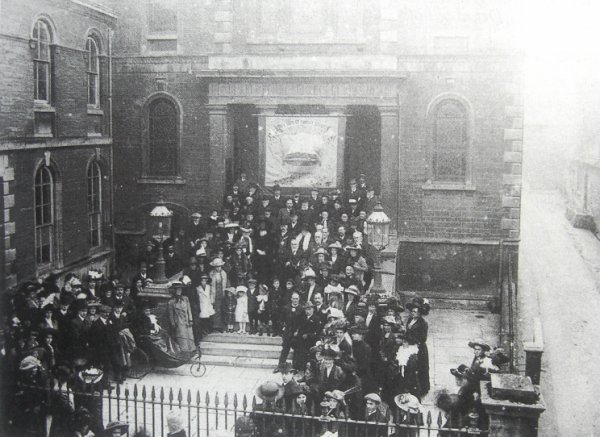
The opening of the Newnam Memorial Hall on 21 October 1912.
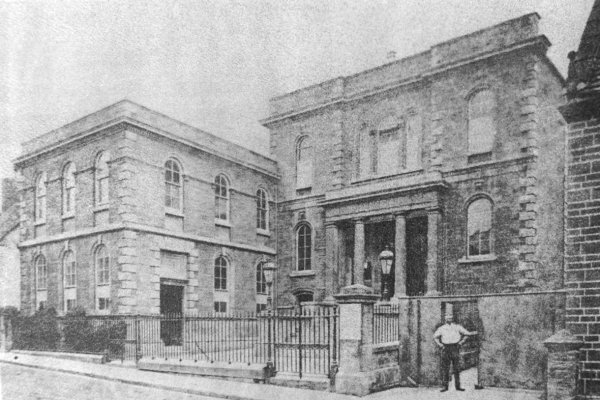
The Newnam Hall
and the
Baptist Church
before the
construction of
Petters Way
alongside.
Photographed
about 1912.
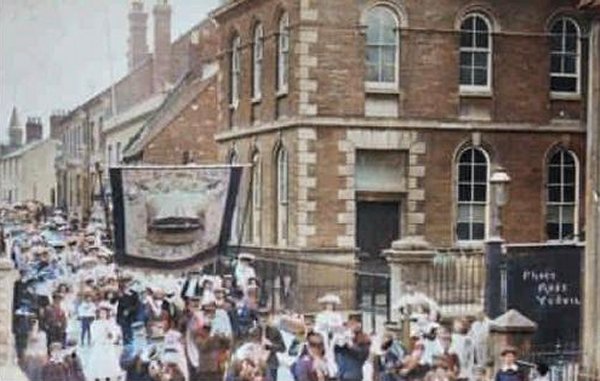
The annual Yeovil Baptist School Parade passes by the Newnham Hall and the Baptist church.
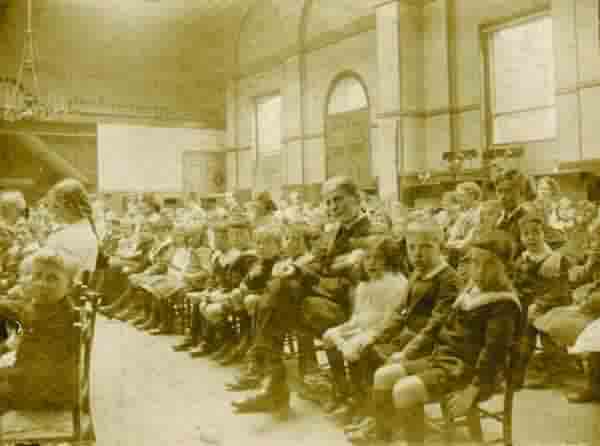
Courtesy of
David Stuckey
A photograph of an early Sunday school class in the Newnam Hall - probably around 1914.
![]()
First World War, as Red Cross Hospital
At the outbreak of the First World War, the British Red Cross and the Order of St John of Jerusalem combined to form the Joint War Committee. They pooled their resources under the protection of the red cross emblem. As the Red Cross had secured buildings, equipment and staff, the organisation was able to set up temporary hospitals as soon as wounded men began to arrive from abroad.
The buildings varied widely, ranging from town halls and schools to large and small private houses, both in the country and in cities. The most suitable ones were established as auxiliary hospitals. Auxiliary hospitals were attached to central Military Hospitals, which looked after patients who remained under military control. There were over 3,000 auxiliary hospitals administered by Red Cross county directors.
In many cases, women in the local neighbourhood volunteered on a part-time basis. The hospitals often needed to supplement voluntary work with paid roles, such as cooks. Local medics also volunteered, despite the extra strain that the medical profession was already under at that time. The patients at these hospitals were generally less seriously wounded than at other hospitals and they needed to convalesce. The servicemen preferred the auxiliary hospitals to military hospitals because they were not so strict, they were less crowded and the surroundings were more homely.

The operating theatre of the Red Cross Military Hospital, circa 1917.

Courtesy of Jack
Sweet
The Red Cross Military Hospital 1915-1918, Ward 2.

Courtesy of Jack
Sweet
The Red Cross Military Hospital 1915-1918, dining and recreation room.
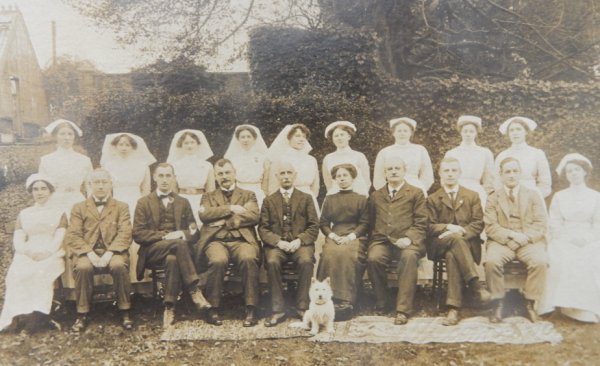
Courtesy of Jack
Sweet
Doctors and nurses of the Newnam Hall Red Cross Hospital photographed in 1915. The second man from the left is Dr Norman Flower and fourth from left is Dr Ptolemy Colmer.
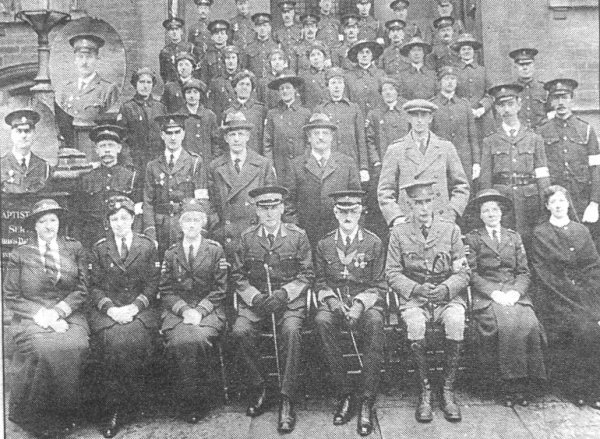
Photograph from an old newspaper cutting showing the officers, staff and Voluntary Aid Detachment volunteers who worked in the Red Cross Hospital at Newnam Memorial Hall, in 1918.

Courtesy of Jack
Sweet
The Men's Voluntary Aid Detachment of the Red Cross Hospital at Newnam Hall.
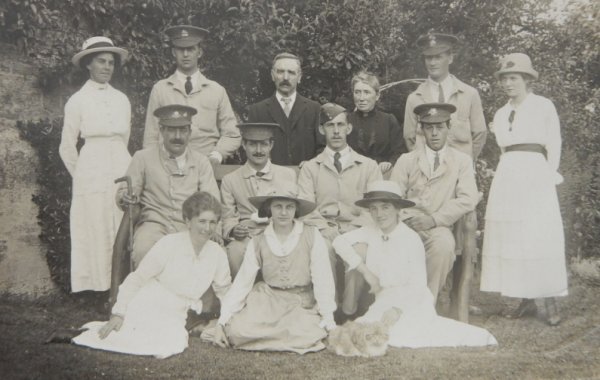
Courtesy of Jack
Sweet
An unknown Yeovil family entertain wounded soldiers from the Red Cross Military Hospital in Newnam Hall. Even the family cat got in the picture.
![]()
Second World War
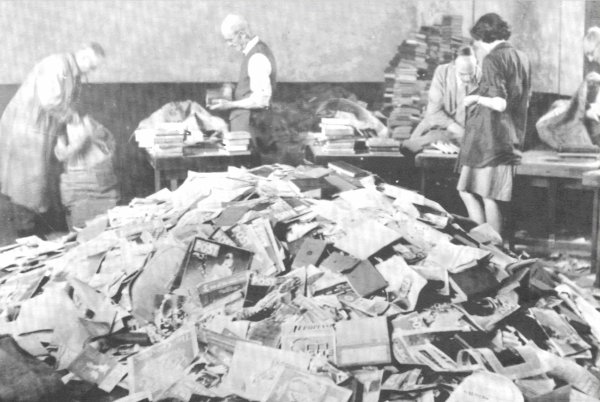
Sorting through books and magazines for the War effort at Newnam Hall in 1943.

... and a colourised photograph of the book sorting.

Courtesy of Jack
Sweet.
This
photograph
features in
my 2024 book "Yeovil,
the Home
Front,
1939-1945"
A colourised photograph, taken on VE-Day, 8 May 1945, of an unknown American GI standing on top of the doorway to the Newnam Hall, which was used by the Americans as a club - the Donut Dugout - during the war.
![]()

Courtesy of
Chris Rendell
- This
photograph
features in my
book 'Yeovil
From Old
Photographs'
The Newnam Hall photographed from King George Street in 1985.
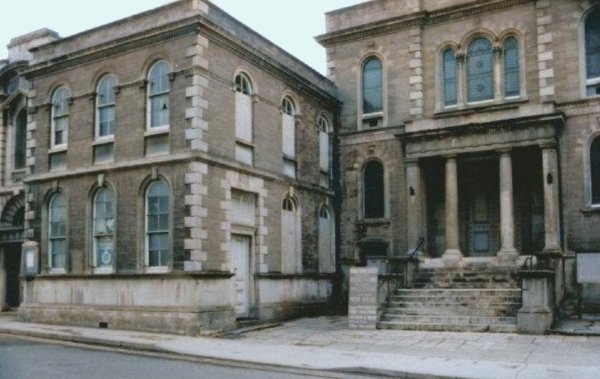
Photograph
(colourised) by
Trevor Hussey,
courtesy of Mrs
Anne Hussey
The Newnam Hall
and the entrance
to the Baptist
Chapel,
photographed in
1990.
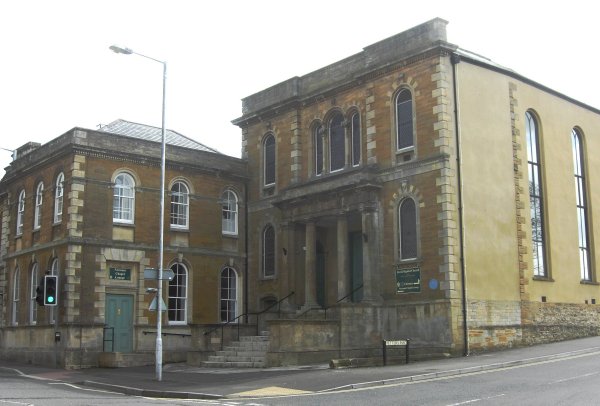
The Newnam Hall
and Baptist
Church photographed
in 2013.
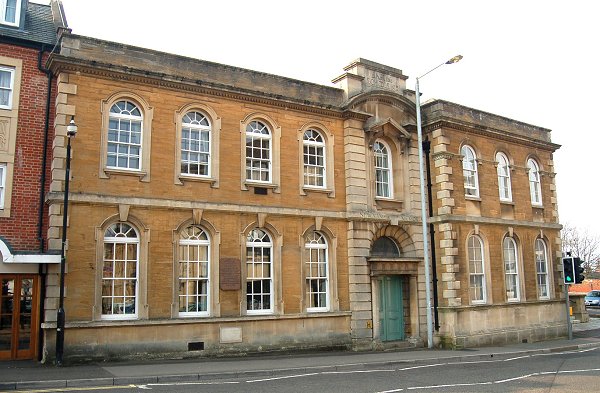
The South Street frontage of the Newnam Memorial Hall. Photographed in 2013.
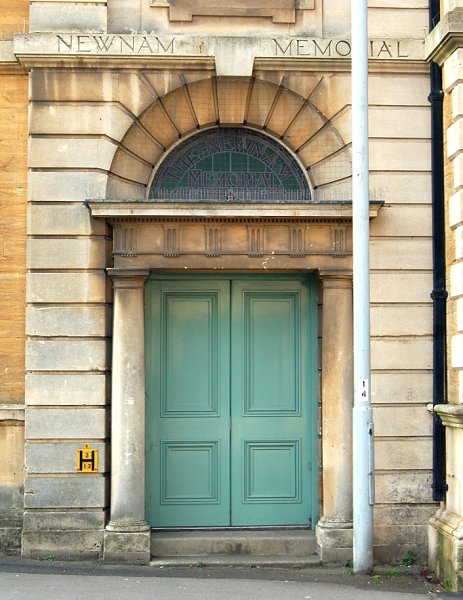
The South Street entrance. Photographed in 2013.
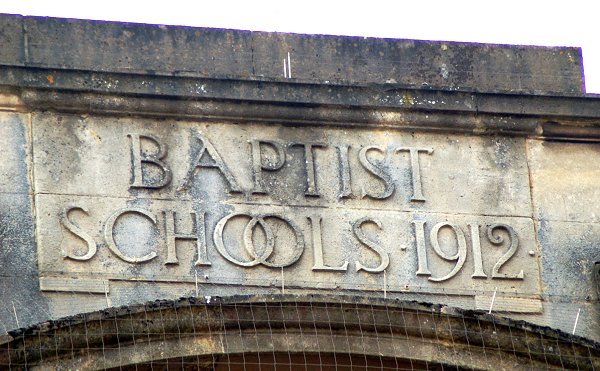
The datestone on the parapet of the South Street elevation of the building. Photographed 2013.
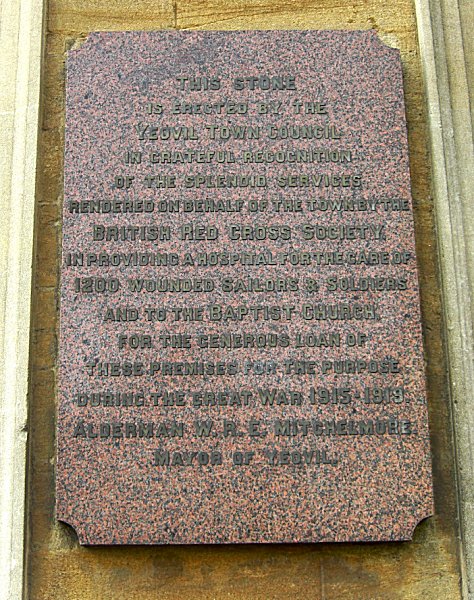
The plaque, described above, on the South Street elevation of the building. Photographed in 2013.
